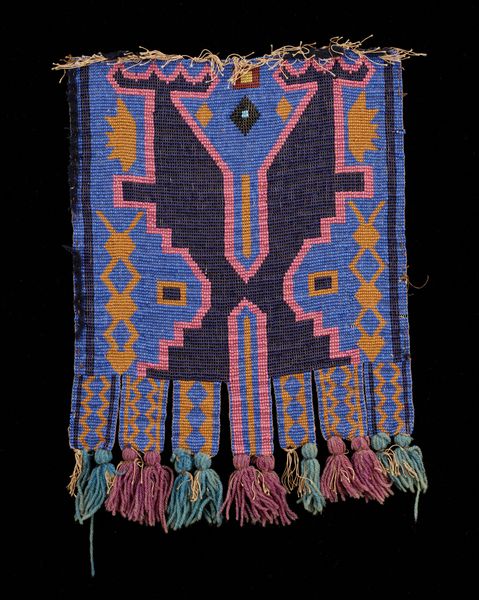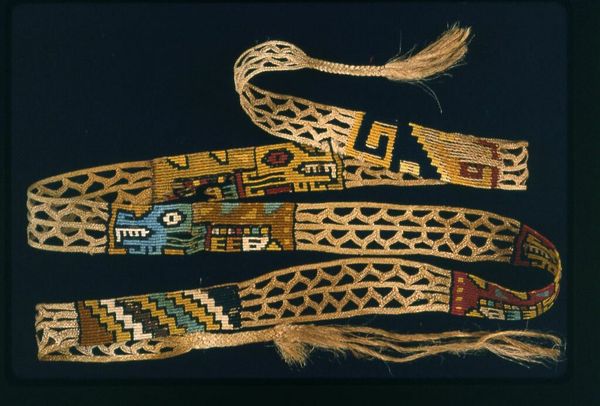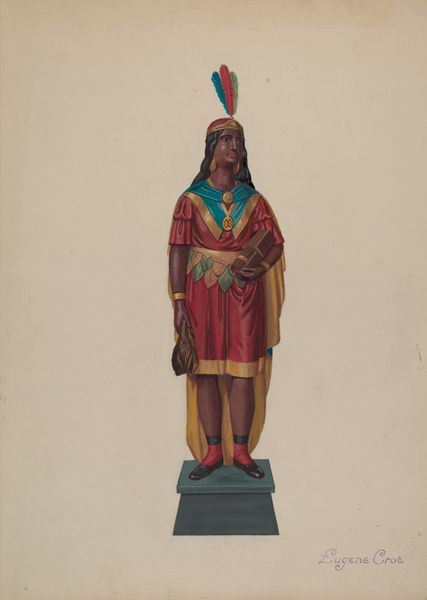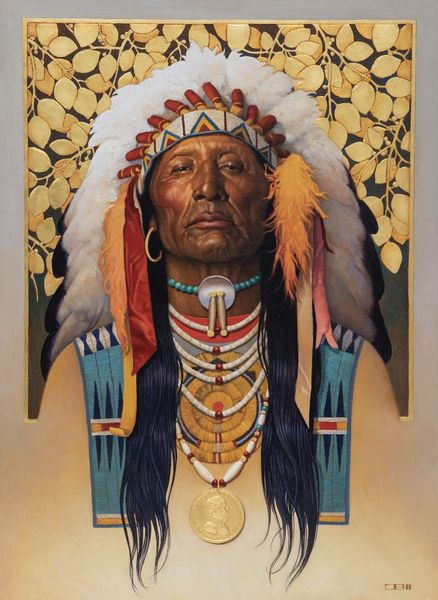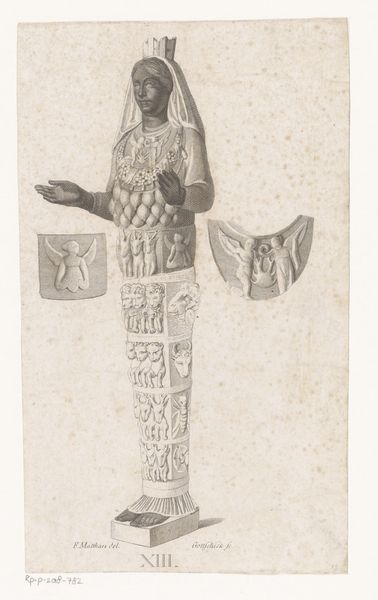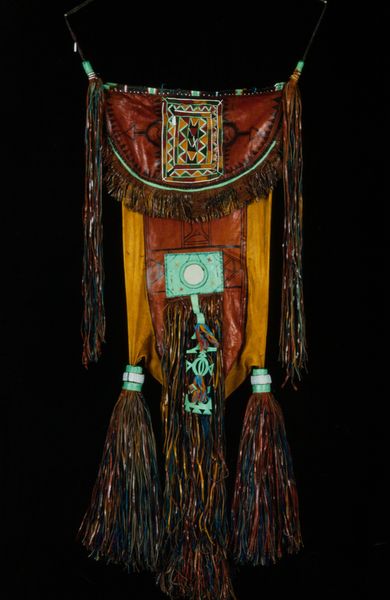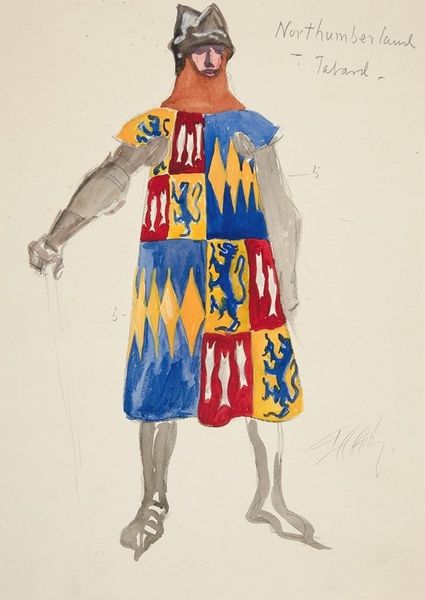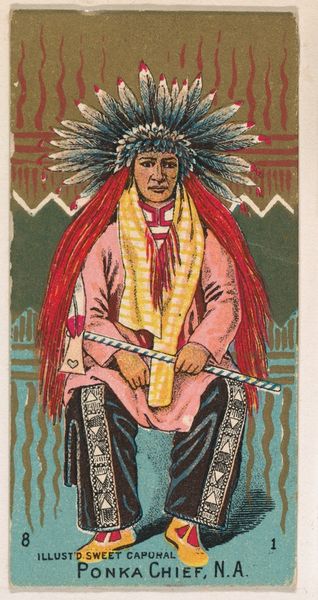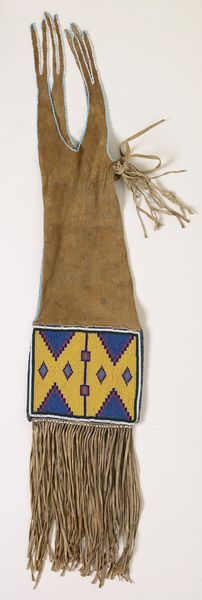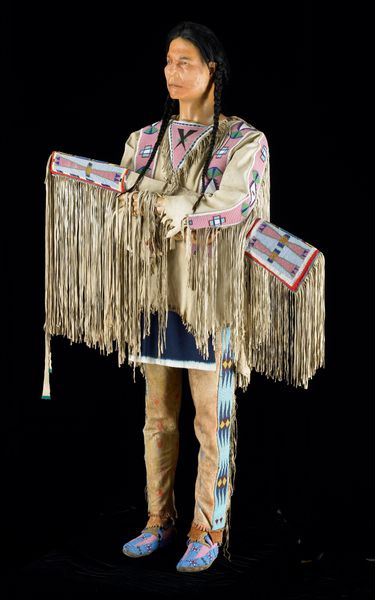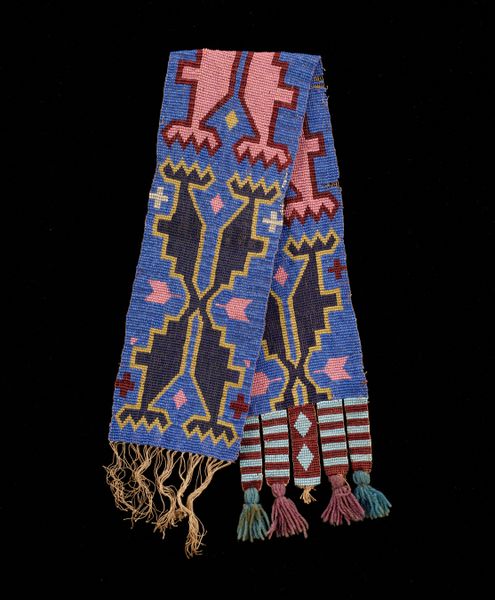
painting
#
portrait
#
painting
#
folk art
#
figuration
#
naive art
#
indigenous-americas
Copyright: Stephen Mopope,Fair Use
Editor: Here we have Stephen Mopope’s “Mother and Papoose,” created with simple lines, flat planes, and bold colors that makes for such an affecting image. It’s quite stylized. I am immediately struck by how the cultural significance of motherhood is presented here. How do you interpret the social role that this piece occupies? Curator: Well, this work gives us an intriguing glimpse into how Indigenous artistic expression was navigating the currents of the 20th century. Considering the context of the period, we should remember that Native American art was often presented through the lens of anthropology rather than fine art. This work presents itself outside those contexts. Editor: In what way? Curator: Mopope, and artists like him, sought to claim agency and reframe their representation within the art world. They produced images for a wider audience, negotiating tradition with external expectations and commercial interests. We have to consider how institutions shaped the visibility and reception of Native American art. Do you see any signs of the work that reflect this interplay? Editor: It’s in the choice of subject matter, perhaps. The mother-and-child motif is very universal, understandable across cultures, while also being specific to Indigenous culture. Curator: Exactly! And how it's stylized, fitting within both Native American artistic traditions but also modernist trends prevalent at the time, widening appeal and legibility. That synthesis is really at the heart of it, don't you think? Editor: Absolutely. It makes me appreciate how art can function both as cultural preservation and a form of cultural negotiation. Curator: Agreed! It underlines the complex role of art in shaping cultural narratives and its dynamic relationship with societal forces.
Comments
No comments
Be the first to comment and join the conversation on the ultimate creative platform.

